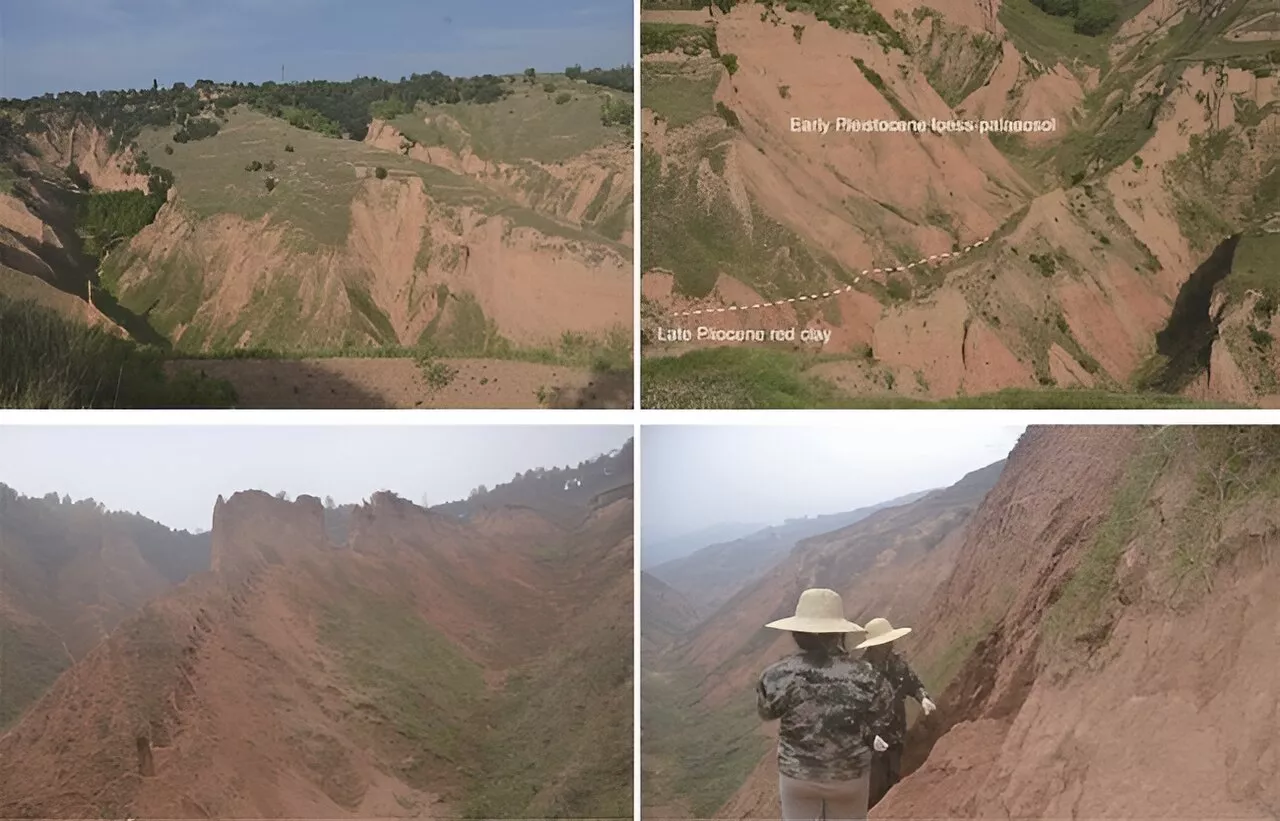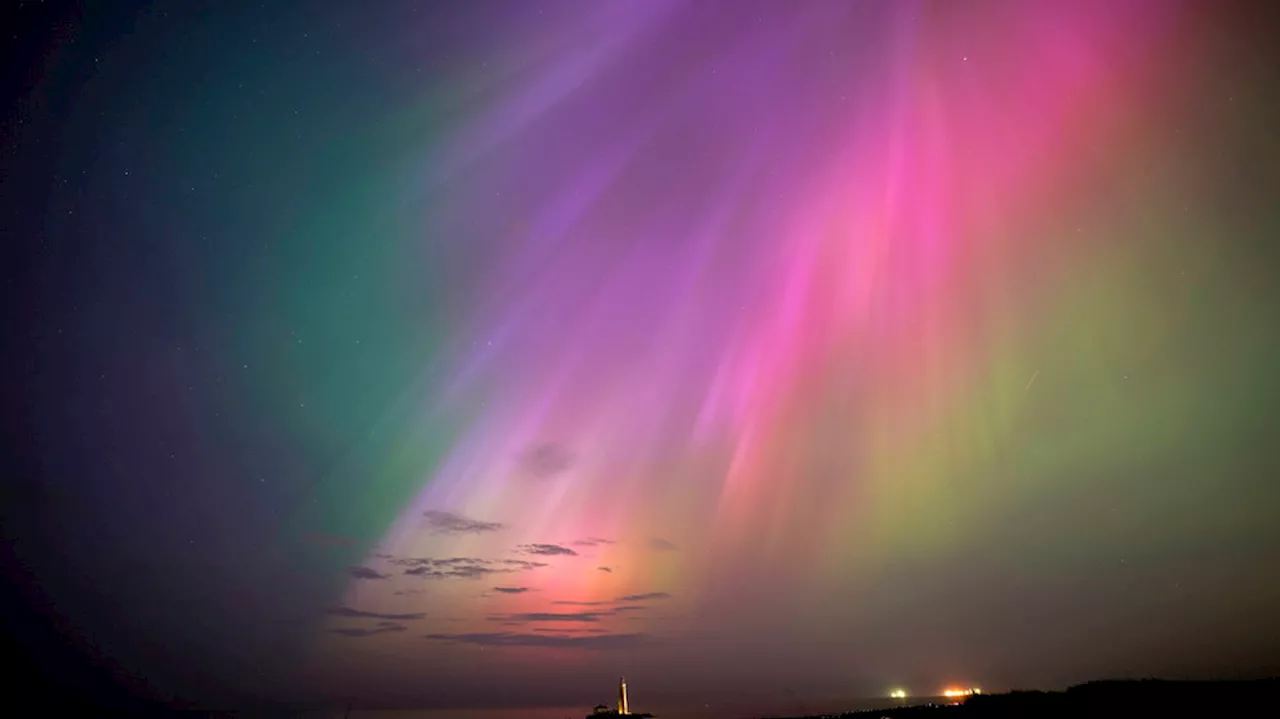People across the Northern Hemisphere were treated to a dazzling light show late Friday and early Saturday after a rare solar storm swept Earth.
The aurora borealis, also known as the northern lights, glow on the horizon at St. Mary's Lighthouse in Whitley Bay on the North East coast, England, Friday, May 10, 2024.
CMEs typically see “a billion tons or so of plasma from the sun” arrive on Earth, according to NOAA. This can result in a “major disturbance” of Earth's magnetic field and cause disruptions of navigation systems, power grids and radio communications.
Auroras NOAA Geomagnetic Northern Hemisphere Cmes G5 Communications
United States Latest News, United States Headlines
Similar News:You can also read news stories similar to this one that we have collected from other news sources.
 Solar storm hits Earth, producing colorful light shows across Northern HemisphereThe U.S. National Oceanic and Atmospheric Administration issued a rare severe geomagnetic storm warning when a solar outburst reached Earth on Friday afternoon, hours sooner than anticipated.
Solar storm hits Earth, producing colorful light shows across Northern HemisphereThe U.S. National Oceanic and Atmospheric Administration issued a rare severe geomagnetic storm warning when a solar outburst reached Earth on Friday afternoon, hours sooner than anticipated.
Read more »
 Solar storm hits Earth, producing colorful light shows across Northern HemisphereThe U.S. National Oceanic and Atmospheric Administration issued a rare severe geomagnetic storm warning when a solar outburst reached Earth on Friday afternoon, hours sooner than anticipated.
Solar storm hits Earth, producing colorful light shows across Northern HemisphereThe U.S. National Oceanic and Atmospheric Administration issued a rare severe geomagnetic storm warning when a solar outburst reached Earth on Friday afternoon, hours sooner than anticipated.
Read more »
 Solar storm hits Earth, producing colorful light shows across Northern HemisphereThe U.S. National Oceanic and Atmospheric Administration issued a rare severe geomagnetic storm warning when a solar outburst reached Earth on Friday afternoon, hours sooner than anticipated.
Solar storm hits Earth, producing colorful light shows across Northern HemisphereThe U.S. National Oceanic and Atmospheric Administration issued a rare severe geomagnetic storm warning when a solar outburst reached Earth on Friday afternoon, hours sooner than anticipated.
Read more »
 Solar storm hits Earth, producing colorful light shows across Northern HemisphereAn unusually strong solar storm hitting Earth produced stunning displays of color in the skies across the Northern Hemisphere, with no immediate reports of…
Solar storm hits Earth, producing colorful light shows across Northern HemisphereAn unusually strong solar storm hitting Earth produced stunning displays of color in the skies across the Northern Hemisphere, with no immediate reports of…
Read more »
 Solar storm hits Earth, producing colorful light shows across Northern HemisphereAn unusually strong solar storm hitting Earth produced stunning displays of color in the skies across the Northern Hemisphere early Saturday, with no immediate reports of disruptions to power and communications.
Solar storm hits Earth, producing colorful light shows across Northern HemisphereAn unusually strong solar storm hitting Earth produced stunning displays of color in the skies across the Northern Hemisphere early Saturday, with no immediate reports of disruptions to power and communications.
Read more »
 Researchers find Northern Hemisphere glaciation enhances orbital- and millennial-scale Asian winter monsoon variabilityIn a study published in Nature Communications, researchers have documented that persistent millennial-scale Asian winter monsoon (AWM) intensity fluctuations were superimposed on 41-kyr and ~100-kyr orbital variability during both the warmer (higher CO2) late Pliocene and colder (lower CO2) early Pleistocene, in response to both external...
Researchers find Northern Hemisphere glaciation enhances orbital- and millennial-scale Asian winter monsoon variabilityIn a study published in Nature Communications, researchers have documented that persistent millennial-scale Asian winter monsoon (AWM) intensity fluctuations were superimposed on 41-kyr and ~100-kyr orbital variability during both the warmer (higher CO2) late Pliocene and colder (lower CO2) early Pleistocene, in response to both external...
Read more »
